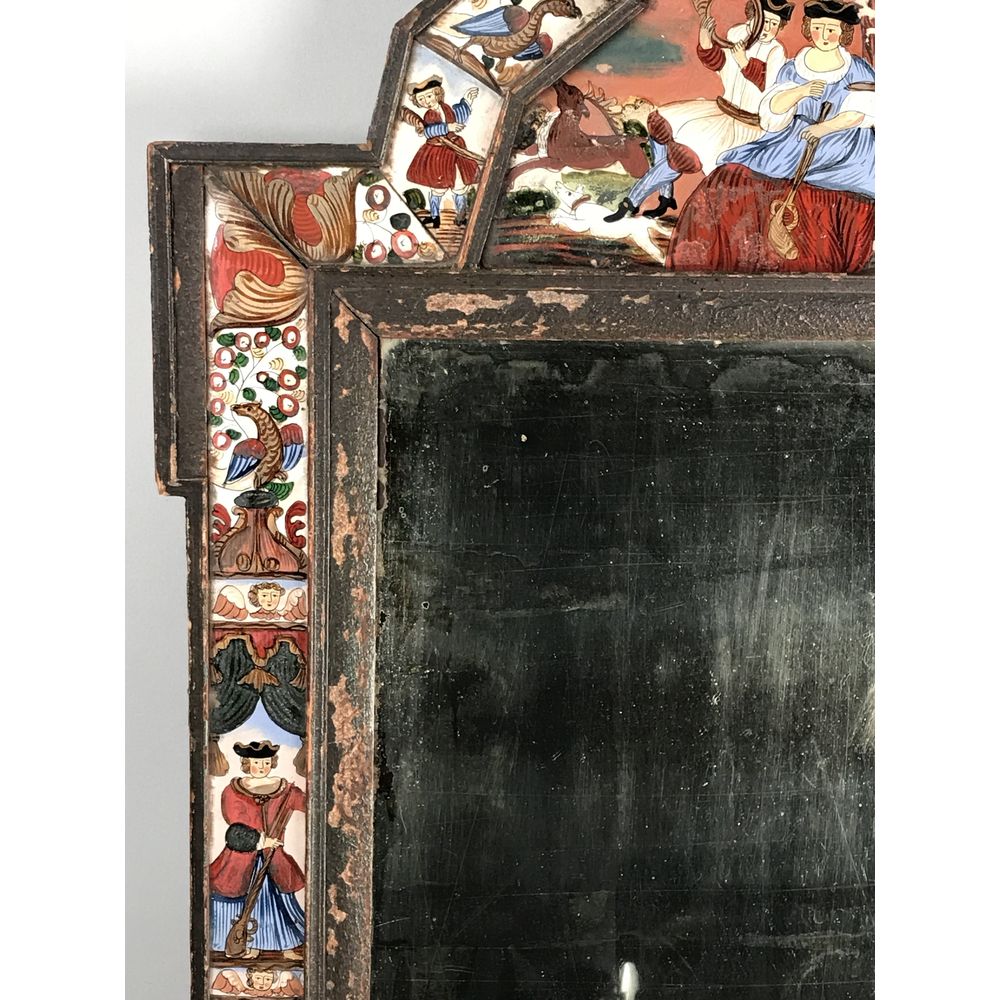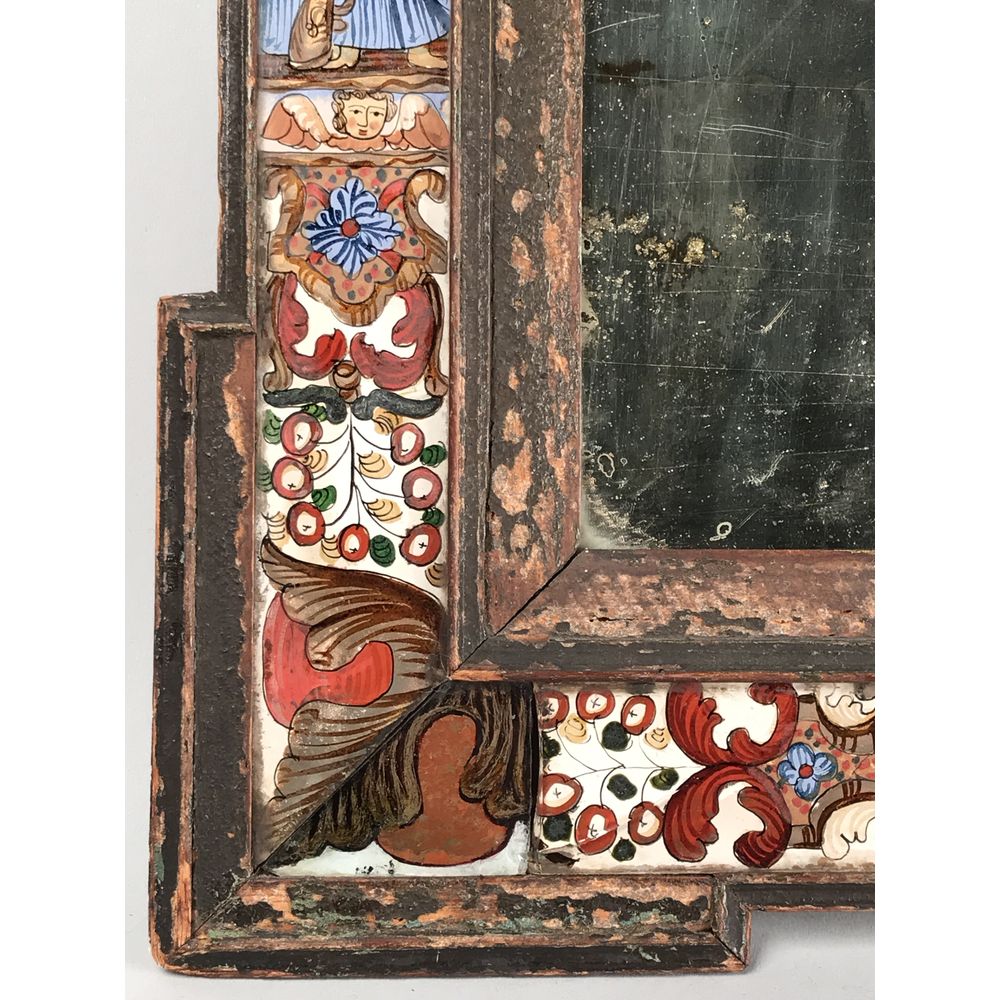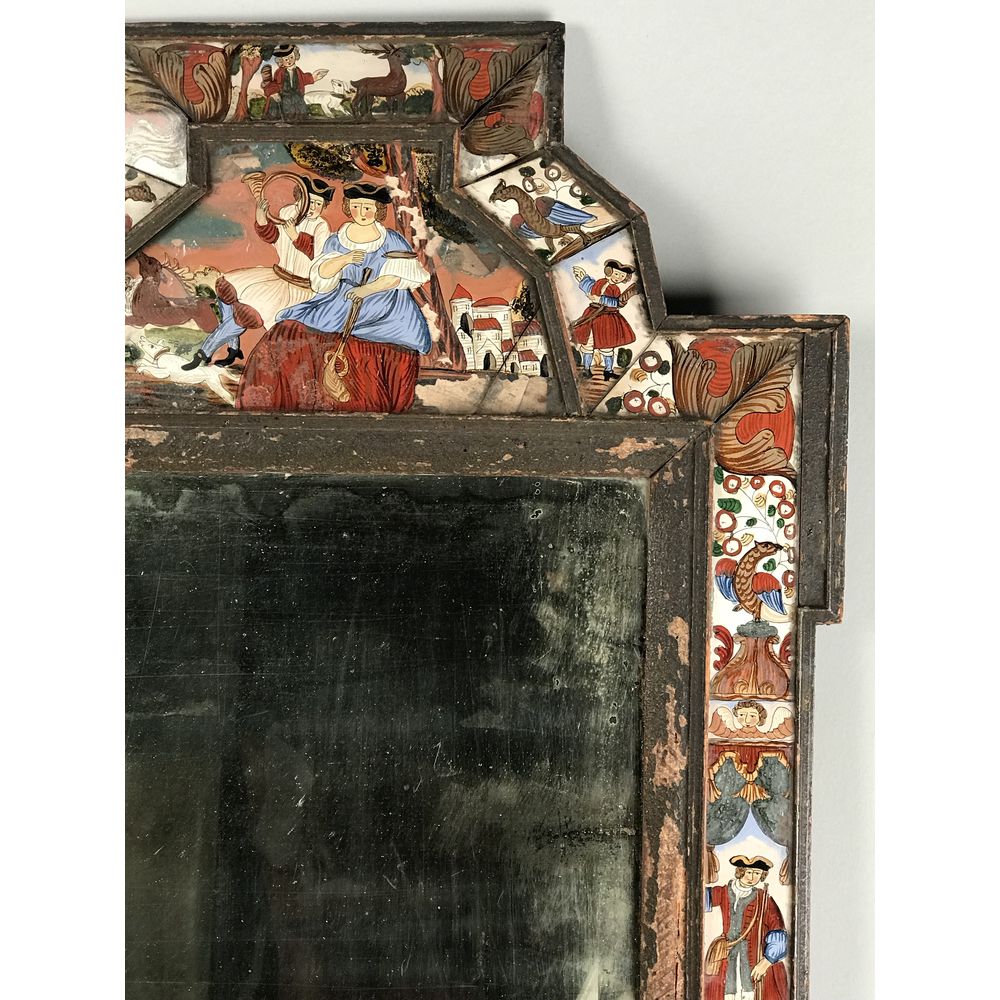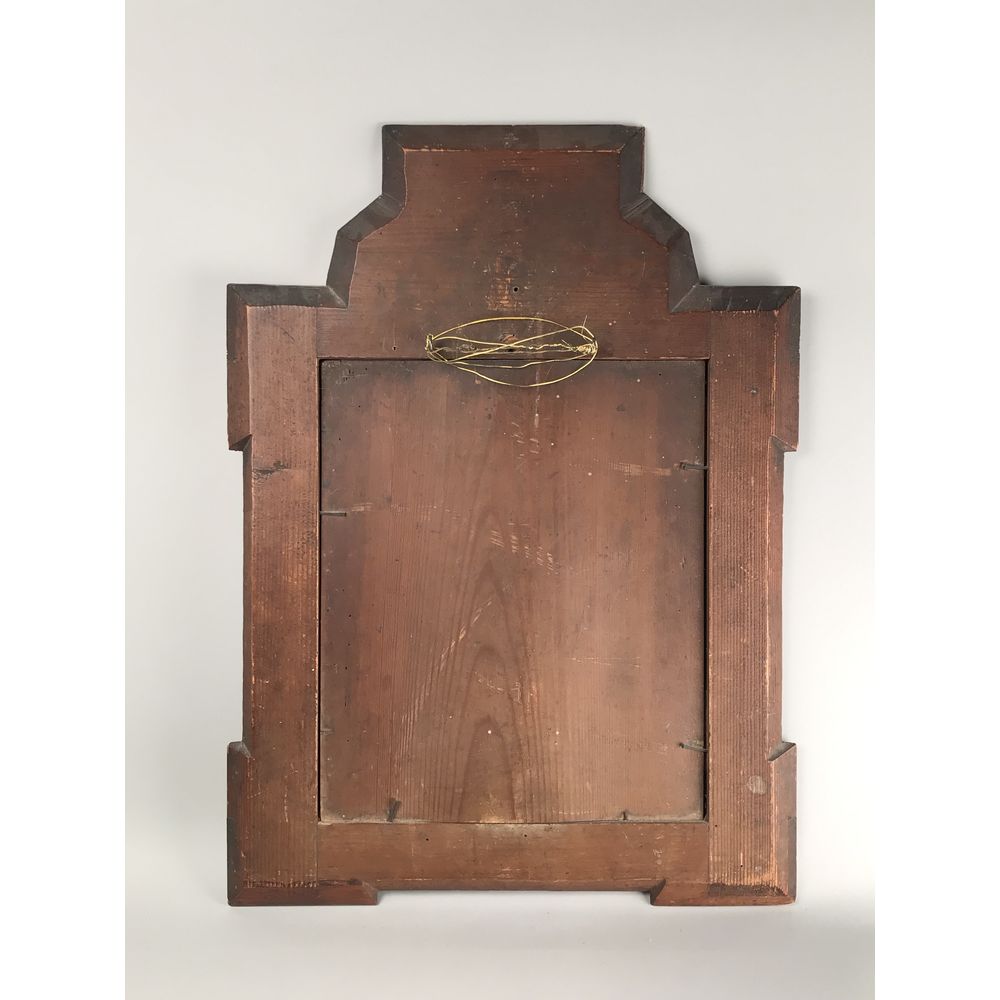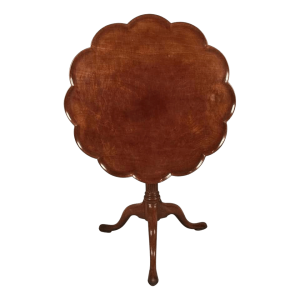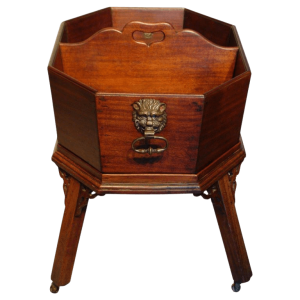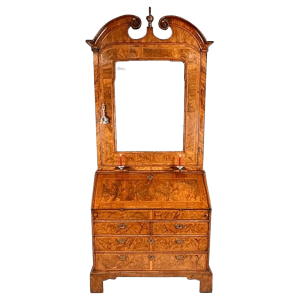Description
An extremely rare American mirror with reserves painted with landscapes, animals and hunting scenes.
Colonial, mid 18th century, ca 1750.
h 56.5 cm
d 2.5 cm
w 41 cm
BHA 999
Stylistically we could date this a little earlier in the 18th century, although it is very hard to be so specific as these antique looking glasses are so rare.
Nb. A very similar ‘Verre églomisé’ mirror was acquired by the Victoria and Albert Museum in 1930, and was the subject of a comprehensive article in Country Life by F. Sydney Eden, who associated this type of work with Jean Baptiste Glomy working in Paris 1720-1786.
It has been suggested this example may be an American cased travelling ‘Court’ mirror taken around by young ladies in their coaches on courting visits to potential suitors. (See below* for another explanation).
Ralph Edwards CBE FSA illustrates a travelling or Court mirror in ’The Shorter Dictionary of English Furniture’, Hamlyn Publ, London, Fourth Impression 1972, p 379, ill. 3.
Further reading:
*Although today a vanity case is one of the many things given to young women by their suitors, in the eighteenth and early nineteenth centuries small framed mirrors were among the few articles considered proper presents for such circumstances. As such they were called courting mirrors. Furthermore, because of the high cost and relative scarcity of good mirror glass, they were not inexpensive gifts.
These courting glasses were small. Judging by surviving examples, six to eight by ten to twelve inches were the popular sizes. Before America began to trade directly with the treaty ports of China, courting glasses were the careful work of native cabinetmakers. Moulded frames, finished with oil or varnish, were of maple, cherry, walnut, or pine. Made mostly in the more sophisticated towns along the Atlantic seaboard, they were simplified examples of the crested mirror frames in vogue from the late Queen Anne to the start of the Hepplewhite period. Some were without the arched top, but had a well-cut moulded frame in high relief; a simple yet dignified design.
After 1790, when Elias Haskett Derby of Salem, Massachusetts, established direct trade between the Orient and the United States with his ship, Empress of China, many courting mirrors were brought back from Canton and other treaty ports. Today they are generally found in the coastal towns of New England. They have frames with finely beaded edges and set with long narrow panels of painted glass inlays. These frames may be of camphor wood, Chinese cherry, teak, or Oriental pine. Some may be lacquer-decorated.
Presumably, many courting glasses were brought home as presents by sailors who had manned ships in the China trade, but a good number were part of the regular cargo. To protect them during the long voyage back, they were each fitted into a small wooden box in which the framed glass was held in place with removable wooden pegs.
Between 1790 to about 1830, they were so highly regarded as gifts that many a young woman kept her mirror in its travelling case, and hung the choice article on the wall, in its box. For collectors, the boxed examples are the rarest of all, especially if they still retain their original lids. Boxed or not, one of these small glasses makes a colourful and interesting decoration, especially as the quality of mirror plate is always high and tends to give a clear and undistorted reflection; not always found in the larger mirrors of the same date.
About the turn of the nineteenth century American cabinet-makers competed briefly with this China-trade product. The American version has a rounded moulded frame faced with walnut veneer, varying in tone from dark to light, and an arched top containing a glass panel painted with a conventional design, such as a bird perched on a twig. The overall dimensions are eight inches wide by a little over thirteen inches high.
Ref:
Wallace Nutting ‘Furniture Treasury’ Vols. 1 & 2 (Mostly of American Origin. Framingham Massachusetts) Macmillan Publishing Co Inc, 866 Third Avenue, New York, NY 10022, USA, Ills. 3148 & 3151.
Nutting illustrates closely related Courting Glasses.
”Courting glasses so-called because they were carried in a shallow box with a cover when ladies went out calling. At the last moment they effected any necessary repairs to their countenances by inspecting themselves in the Courting Glasses. Their date is about 1800, and, like most glasses, they were brought from foreign parts, probably in the first place from China. The greater part of them are somewhat crude in workmanship. The frames are formed of glass decorated in the Chinese manner, or in other fashions which do not at all suggest that origin. Most of them are small and appropriate for carrying about. Occasionally like that above (3148 & 3151) is of pretty large size. It would seem that the fancy for them called for a size now and then proper for hanging on the wall”.






